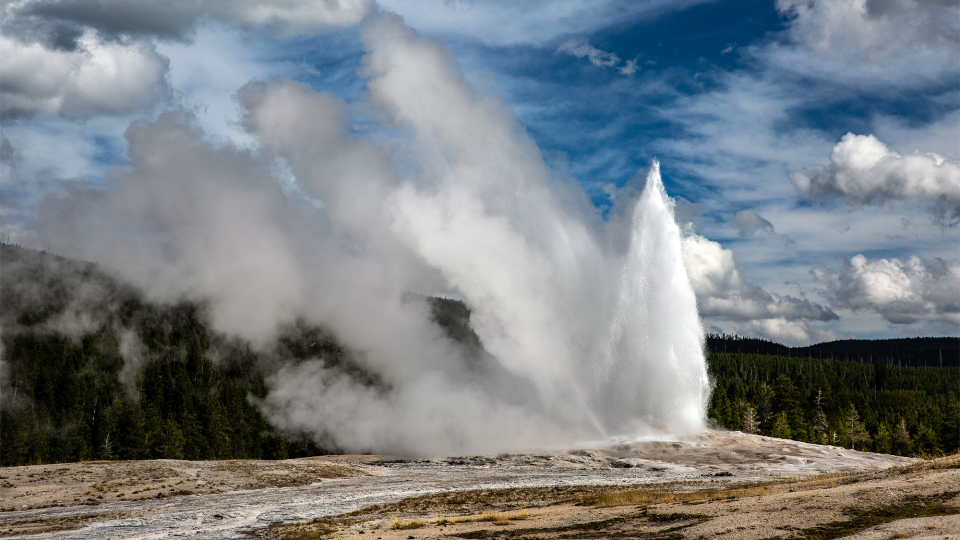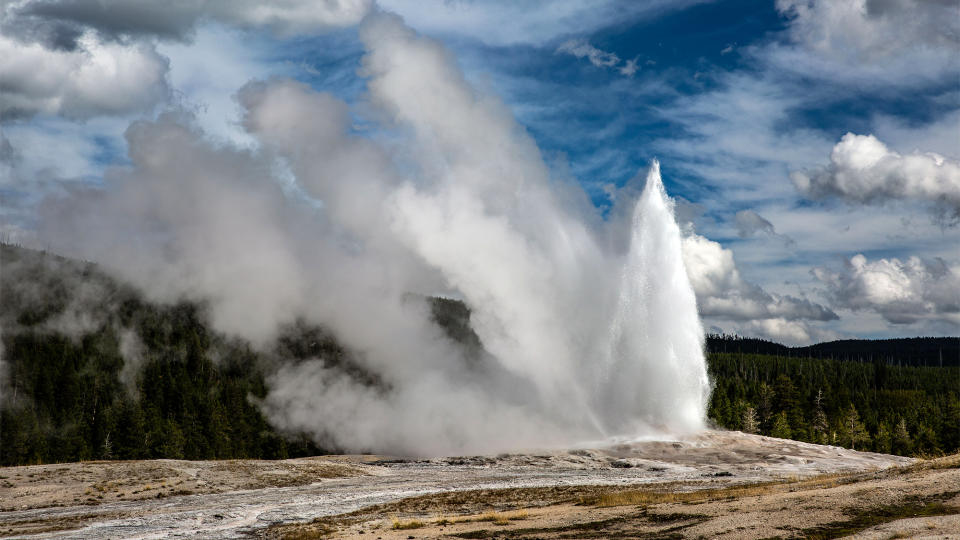Yellowstone National Park is home to many of the largest known volcanic eruptions on the planet, and scientists have new research that is helping determine when – and where in the park – the next one could occur.
A study on the Yellowstone Caldera, located at the center of the eponymous park and is one of the largest volcanic systems in the world, identified how much magma is currently beneath the caldera and how long it may take to reach the point of eruption.

FILE – The iconic Old Faithful Geyser springs to life (every 90 minutes) in Yellowstone National Park’s Upper Geyser Basin on September 18, 2022, in Yellowstone National Park, Wyoming.
Previous research using seismology found that a large reservoir of magma sat beneath the caldera. However, the recent study, using a method known as magnetotellurics that tracks the electric conductivity of magma, found something different.
Advertisement
Advertisement
“When we used magnetotellurics, we were able to see, actually, there’s not a lot there,” said Ninfa Bennington, lead author on the study and a research geophysicist at the Hawaiian Volcano Observatory. “There are these segregated regions where magma is stored across Yellowstone, instead of having one sort of large reservoir.”

Purple triangles note the location of the magnetotelluric stations. The orange region notes subterranean chambers a type of magma known as basalt — or, the heat source of eruptions — is connected to rhyolitic magma, a type of magma that is closer to the surface. This connection lies beneath the northeast region of Yellowstone.
Bennington added that her team learned that the percentage of magma stored in the reservoirs was actually quite low. This means that none of the reservoirs are capable of producing an eruption anytime soon. Their research suggests the northeast region of Yellowstone wouldn’t expect to erupt again for hundreds of thousands of years.
Researchers also determined where the next eruption would take place in the park. By using magnetotelluric data, they found that the heat source that keeps the shallower reservoirs of magma at Yellowstone active is in the northeast region of the park.
Advertisement
Advertisement
Bennington noted that that heat source, or engine, also happened to be connected to the largest region of magma storage.

Map showing extent of ashfall from eruptions.
The Yellowstone Caldera formed over 600,000 years ago from the Lava Creek Tuff eruption, which was measured on the Volcanic Explosivity Index as an 8, according to the U.S. Geological Survey – the highest rung on the scale. To compare, Mt. St. Helens’ eruption in 1980 was a level 4.
Known as a super eruption for its magnitude, the event emptied out enough volcanic material to produce the 30-by-40-mile-wide caldera.
The National Park Service said the eruption covered an area just shy of the size of Rhode Island. The Usgs said it had spread ash and materials over 1,000 miles, reaching what today is Southern California and Louisiana.
Original article source: Study estimates when Yellowstone National Park’s giant supervolcano will erupt again
EMEA Tribune is not involved in this news article, it is taken from our partners and or from the News Agencies. Copyright and Credit go to the News Agencies, email news@emeatribune.com Follow our WhatsApp verified Channel




